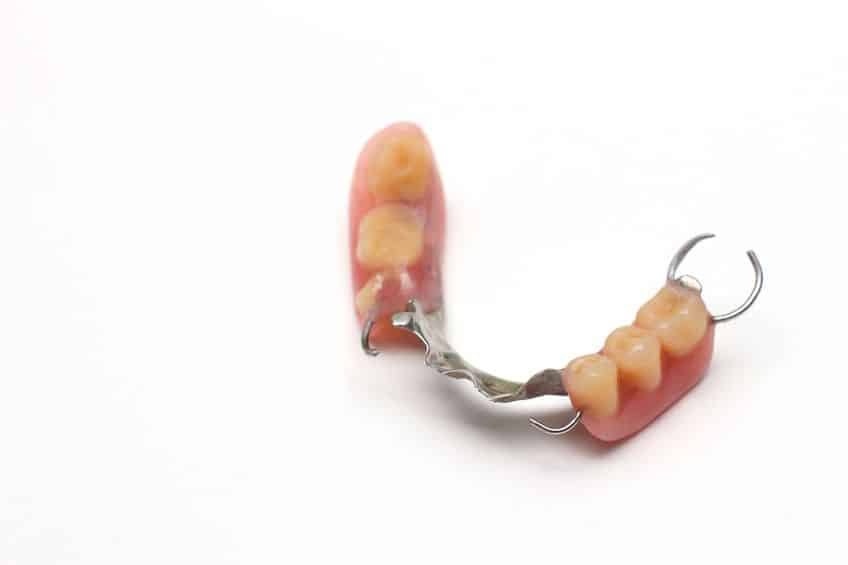Convenient Locations Serving Allston & Brighton, MA
What Is A Bridge And When Are They Used?

If a patient is only missing one or more teeth, it may be customary for SoftTouch Dentistry to recommend dental bridges to close the gap created by the missing teeth. Dental bridges consist of two crowns on both ends of the bridge called abutments that function as anchors to hold the bridge in place. In between the crowns are the artificial teeth which will complete the bridge.
Bridges are important for maintaining overall dental health. If one tooth is lost, the surrounding teeth may shift or change position potentially causing damage or decay. By installing a bridge, Dr. Bidabadi ensures a healthy, and aligned smile despite a missing tooth.
What Materials Are Bridges Made Of?
Bridges fill the gaps in your teeth by replacing the missing ones with either all-porcelain material, or the combination of traditional porcelain and metal materials or other advanced options.
Who Is an Ideal Candidate for Dental Bridges?

People who are good candidates for a dental bridge have one to three consecutive missing teeth. However, they also have healthy teeth on either side of their missing teeth, with strong jawbone density, creating a solid foundation for their bridge.
Lastly, the best candidates for a dental bridge have good oral and overall health and are free of gum disease. Those with gum disease will need treatment before moving forward with a dental bridge.
How Long Will My Dental Bridge Last?
Patients who properly care for and maintain their dental bridge find they last for ten to 15 years or even longer.
How Long Will It Take to Get Used to My Dental Bridge?
Any soreness, heightened sensitivity, or awkwardness you may experience as you adjust to your new dental bridge should dissipate within about two weeks after your procedure. During this time, it’s best to avoid very hot or cold foods. Patients also may benefit from using toothpaste specially formulated for sensitive teeth.
Are There Different Kinds of Dental Bridges?
Dental bridges have been around for a very long time. This has given dentists plenty of opportunities to expand upon the basic structure that was first developed. Today, we have removable bridges and fixed bridges, and even implant-supported bridges. A bridge may be unique based on where it is placed in the mouth. For example, a Cantilever bridge is a restoration that may be affixed to just one tooth. That would be the last molar, with the pontic replacing the very back tooth. While a cantilever bridge can be used in this situation, your dentist may prefer to replace the most posterior tooth with a dental implant and crown. Another type of bridge is the Maryland bridge. This restoration doesn't rely on crowns to secure the artificial tooth or teeth. Instead, the Maryland bridge is affixed to adjacent teeth using a metal framework. While this bridge is more conservative and doesn't require the support of two otherwise healthy teeth, it may not be as durable as other types of bridges. Finally, the implant-supported dental bridge is affixed only to one or two dental implants, not to any other teeth.
Why Would I Choose an Implant-Supported Bridge?
It may seem as though the sole purpose of a dental bridge is to replace one or more missing teeth so you can chew, speak, and feel confident about your appearance. While these are the general goals of a bridge, there's more to tooth replacement than placing artificial teeth. An implant-supported denture is advantageous because it achieves the utmost stability for the new teeth. It also eliminates the need to place crowns on two teeth that wouldn't need them otherwise. The use of implants also supports the regeneration of healthy jawbone tissue. When you lose a tooth, you also lose the roots that secured that tooth or those teeth to the jawbone. Without roots spanning from teeth to jawbone, there is a lack of vibration into the bone. Vibration from chewing is a necessary part of bone regeneration. So, without it, the bone density beneath the missing tooth or teeth will gradually decline.
What is the Process of Getting an Implant-Supported Bridge?
There are always multiple aspects of getting a dental bridge. Your treatment may involve the removal of a badly damaged tooth. After the tooth is pulled, your dentist will prepare what will be the anchor teeth for your bridge. This appointment will involve the reduction of the anchor teeth and impression-taking to create a model for your new crowns that will stabilize the bridge. You'll receive temporary crowns to wear for a few weeks. A second appointment is set to replace the temporary crowns with your new bridge. This conventional process can take up to a month.
If you choose to receive an implant-supported bridge, you'll have a few appointments scheduled over the period of several months. First, you may need extractions. Sometimes, dentists place the dental implant at the time that the damaged tooth is pulled. The implant must then remain undisturbed beneath the gums so it can become encased in bone tissue. This can take up to six months. During that healing time, you may have a removable bridge or other restoration in place to support normal chewing. Your bridge is affixed to your dental implants once the dentist has confirmed that those tiny posts are fully integrated within your jawbone.
Do I have to Replace a Missing Tooth?
The choice to replace a missing tooth is completely in your hands. That said, replacement is highly recommended. A missing tooth leaves a significant gap between two other teeth. There is a strong likelihood that the gap will be seen when you speak or smile, and this could lead to self-consciousness about your appearance. On a functional level, the large space in between natural teeth could cause other teeth to shift, creating multiple smaller gaps that could invite the accumulation of plaque and tartar (leading to gum disease or cavities). Finally, untreated tooth loss could affect your jawbone and your nutrition.
We make it as easy as possible for you to successfully replace missing teeth. Give us a call to learn more!
What Is the Recovery and Aftercare for the Dental Bridge Process?
The recovery after placing a traditional dental bridge is not extensive at all. Most patients can resume almost all normall functions and activities immediately. However, there are a few typical adjustments patients with new dental bridges may experience.
Patients may experience temperature sensitivity and pressure from biting and chewing. These reactions are due to the small amount of enamel removed before placing a crown and tend to resolve on their own within about three weeks.
As you recover from your dental bridge placement, it’s recommended that you avoid eating hard or crunchy foods and refrain from biting non-food items, such as using your teeth as a tool. In addition, to reduce discomfort, you may want to use a straw when consuming hot or cold beverages until the sensitivity subsides.
How Do I Maintain and Care for My Dental Bridges?

Your dental bridge benefits from the same oral health care that your natural teeth need. To ensure your dental bridge lasts for years, we advise avoiding particularly hard or sticky foods that can dislodge or damage your bridge, brushing twice a day, and avoiding tobacco products.
Additionally, patients should floss regularly, using a floss threader to clean underneath your bridge. If you experience any damage to your bridge, schedule an appointment with us immediately.
Maintaining healthy teeth and gums are critical for your dental bridge’s longevity. Twice a year dental visits for cleaning and checking your new device will help to ensure that it lasts for years to come.
What Happens If I Damage My Dental Bridges?
In some cases, patients may chip or crack a small part of their dental bridge, and it might be easily fixable with dental bonding, which fills in the gaps to restore strength, function, and shape. If a dental bridge becomes loose, it can be removed and re-cemented if the supporting tooth is still healthy.
However, if you severely damage your dental bridge or if the supporting tooth is severely decaying, you may require a replacement bridge, especially if the bridge’s structure is compromised.
Are There Any Foods or Drinks I Should Avoid After Dental Bridges?
After receiving your dental bridges, it’s important to take care of your oral health by not only having a good oral routine but also by diligently avoiding certain foods and drinks that can be harmful to your teeth. These foods and drinks include:
Sticky foods: Foods such as chewy candy, caramel, or jerky can be detrimental to your to teeth as they may get stuck in places that are hard to reach with normal cleaning, leaving bacteria to grow in that area. The force of chewing sticky foods may also cause your dental bridge to move out of place.
Sugary and salty foods: While sugar and salt are not directly harmful to dental bridges, too much of it can lead to tooth decay without proper dental care. If a cavity infects the teeth supporting your bridges, you may need a placement.
Foods that stain: Tomato sauces, red wine, cola, and other dark foods and drinks can leave behind stains on your dental bridges, which are susceptible to discoloration. Because dental bridges cannot be whitened, the only way to fix this will be through a replacement bridge.
Hard foods: Chips, raw nuts, and raw vegetables are considered hard foods that require a significant amount of tooth pressure to chew them. Chewing hard foods may increase the risk of damage or fracture to the dental bridge.
How Do I Know When to See My Dentist for Dental Bridge Complications?
Even when your dental bridge sustains a small chip and looks perfectly fine, it’s still a good idea to visit your dentist for a check to ensure that its structure and its supporting teeth are not severely damaged. Schedule an appointment at Soft Touch Dentistry if:
- Your dental bridge becomes chipped or has visible cracks
- You have pain when chewing and eating
- You develop teeth sensitivity
- Your gums appear sore or bleeding
What Result Can I Expect From A Dental Bridge?
Once your dental bridges are in place, they restore the appearance and function of your teeth, and you can go about your day-to-day activities. You may not notice the bridge, and the shape of your face and your jaw will not change. Dental bridges can also improve the overall speech function and decrease the slurring sometimes caused by missing teeth.
Are There Any Risks Associated With Dental Bridges?
One should always fill in the place of missing teeth, and bridges are one way of addressing that. Without a dental bridge, your jawline or gums may suffer, speech may become slurred, and other healthy teeth may shift or become damaged. Bridges are one of the ways of maintaining overall dental health.
For the best possible results, it is ideal to have your dental bridge made soon after you lose your teeth. If done properly, dental bridges may provide exactly the same look and feel as your natural tooth.
How Do I Know if My Dental Bridge Fits Correctly?
A well-fitted dental bridge should feel natural in your mouth. It should allow you to bite and chew without discomfort.
Here are some signs that your bridge fits as it should:
- Comfort: There should be no pain or discomfort when you close your mouth or chew.
- Alignment: The bridge should align with your natural bite. It should not cause any changes in how your teeth meet.
- No Movement: Your bridge should stay in place. It may need adjustment if it feels loose or shifts when you talk or eat.
- No Irritation: The surrounding gums should not be irritated, swollen, or sore.
If you experience any discomfort, pain, or other issues, contact your dentist at Soft Touch Dentistry. They will check your bridge and adjust it if necessary.
Can I Play Sports With a Dental Bridge?
Yes, you can play sports with a dental bridge. However, there are some precautions you should take to protect it and your natural teeth:
- Wear a Mouthguard: Wearing a custom-fitted mouthguard can help protect your dental bridge from impact and reduce the risk of damage. It's especially important for contact sports such as football, hockey, and martial arts.
- Avoid High-Risk Activities: If possible, avoid sports or activities that pose a high risk of facial injuries. If you do decide to play these sports, make sure you have proper protective gear.
- Attend Regular Check-ups: Regular dental check-ups will help ensure your bridge remains in good condition.
Can I Get a Dental Bridge if I Have Diabetes?
Yes, people with diabetes can get dental bridges. However, it's important to manage your condition effectively to ensure optimal healing and oral health. Here are some considerations to keep in mind:
- Controlled Diabetes: Well-managed blood sugar levels reduce the risk of complications during dental procedures and improve healing outcomes.
- Gum Health: Diabetes can affect gum health, so maintaining good oral hygiene and attending regular dental appointments are crucial. Gum disease can impact the success of a dental bridge.
- Consultation: Inform your dentist about your diabetes and any medications you're taking. This allows them to tailor the treatment plan to your needs.
At Soft Touch Dentistry, we understand the unique needs of diabetic patients. We will work closely with you to ensure a safe and successful dental bridge placement.
Can Children or Teenagers Get Dental Bridges?
Children and teenagers can receive dental bridges in certain situations. Their suitability depends on a few factors:
- Age: Dental bridges are typically considered for older teenagers whose jaw growth is nearly complete. Placing a bridge too early can be problematic as the jaw grows and develops.
- Permanent Teeth: Bridges are usually recommended for permanent teeth. If a child loses a baby tooth early, alternative treatments like space maintainers might be used until the permanent tooth erupts.
- Dental Health: Good oral hygiene and healthy surrounding teeth are essential for the success of a dental bridge.
At Soft Touch Dentistry, we carefully evaluate younger patients' oral health and development before recommending a dental bridge. We will ensure it's the best option for their long-term dental health before moving forward with treatment.
Why Choose Soft Touch Dentistry?
Choose Soft Touch Dentistry for exceptional dental care led by Dr. Nazila Bidabadi, a Harvard University School of Dental Medicine instructor.
At our practice, we treat your family like our own, offering convenient early morning, lunchtime, evening, and Saturday hours. We also promptly address emergencies and accept most major insurance plans. Major credit cards are welcome, and we provide flexible payment plans and financing options.
When you work with us, prepare to experience superior dental care in a compassionate, patient-centered environment.
Schedule a Consultation
Schedule an appointment to learn more about Dental Bridges and other restorative treatments available at Soft-Touch Dentistry. We have offices located in Brighton and Newton, MA.
One way of filling in the spaces in your smile, whether caused by missing teeth and/or natural large spaces is the implementation of advanced, all-porcelain bridges, as well as traditional porcelain-metal bridges Filling the spaces has the added benefit of keeping the surrounding teeth of an open space from drifting.
